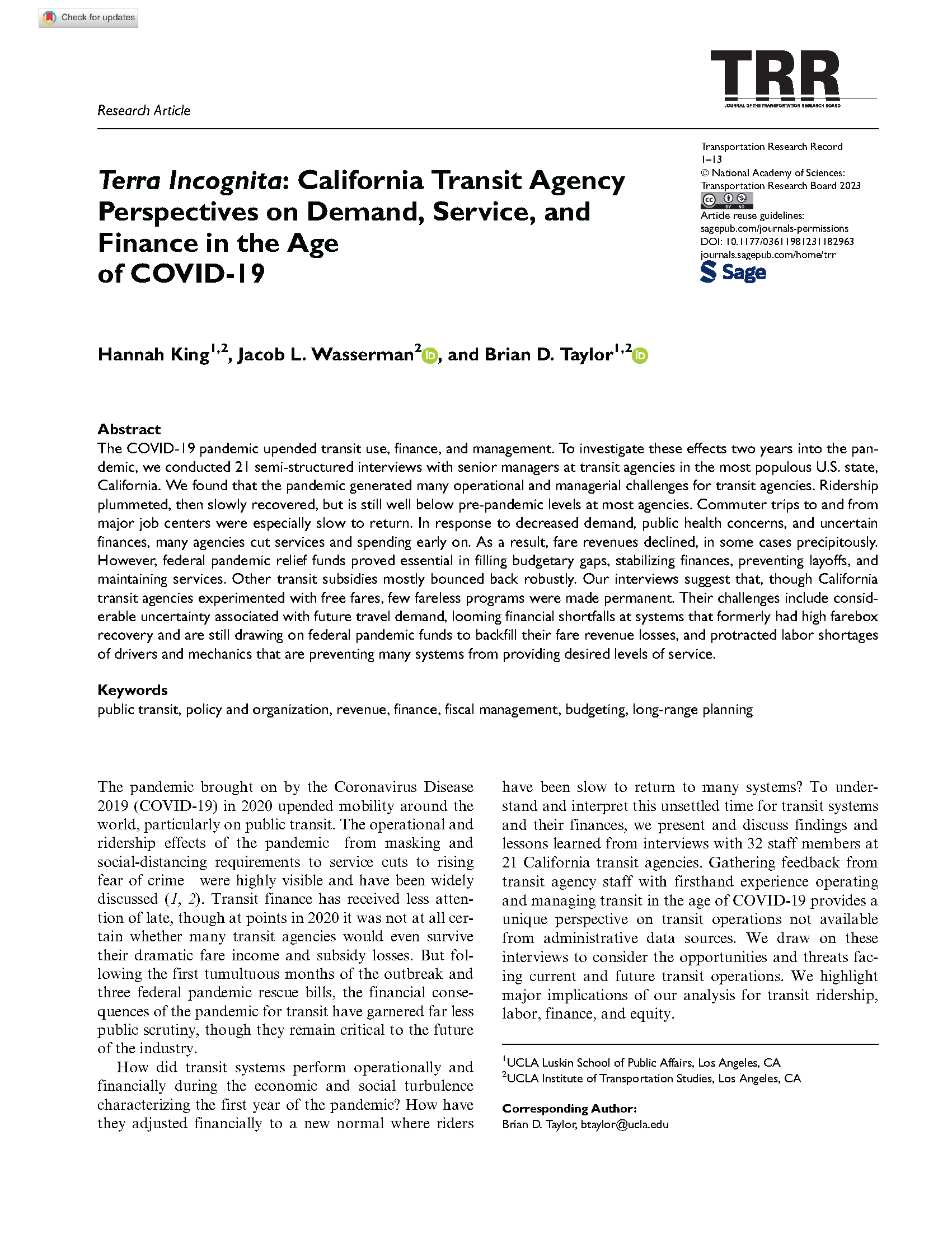Date: December 1, 2024
Author(s): Hannah King, Jacob L. Wasserman, Brian D. Taylor
Abstract
The COVID-19 pandemic upended transit use, finance, and management. To investigate these effects two years into the pandemic, we conducted 21 semi-structured interviews with senior managers at transit agencies in the most populous U.S. state, California. We found that the pandemic generated many operational and managerial challenges for transit agencies. Ridership plummeted, then slowly recovered, but is still well below pre-pandemic levels at most agencies. Commuter trips to and from major job centers were especially slow to return. In response to decreased demand, public health concerns, and uncertain finances, many agencies cut services and spending early on. As a result, fare revenues declined, in some cases precipitously. However, federal pandemic relief funds proved essential in filling budgetary gaps, stabilizing finances, preventing layoffs, and maintaining services. Other transit subsidies mostly bounced back robustly. Our interviews suggest that, though California transit agencies experimented with free fares, few fareless programs were made permanent. Their challenges include considerable uncertainty associated with future travel demand, looming financial shortfalls at systems that formerly had high farebox recovery and are still drawing on federal pandemic funds to backfill their fare revenue losses, and protracted labor shortages of drivers and mechanics that are preventing many systems from providing desired levels of service.
About the Project
This project reports on the recent past, present, and immediate future of public transit finance in California and Southern California in light of the impacts of the COVID-19 pandemic. Initially, the financial situation of transit operators in the state and the region appeared dire, with plummeting ridership and fares and rising subsidies and operating costs. However, the three enormous federal pandemic relief bills brought billions of dollars to California transit agencies and helped them weather the fiscal storm, until many of the state and local tax revenue sources on which the state’s transit agencies rely bounced back and more quickly than most forecasters initially predicted. Yet in 2023, many of the state’s transit systems are struggling operationally and financially. Ridership began eroding in the half-decade leading up to 2020. While the federal pandemic relief bills provided a critical lifeline to keep struggling transit systems afloat early on, these funds are running out. Meanwhile, operating costs have risen, ridership and fare revenues have only partially returned, and some transit systems face “fiscal cliffs,” where they will need substantial new infusions of funding, substantial cuts in costs and service, or some combination of the two. Against this backdrop, this project examines the current state of California transit finance: why ridership and fare revenues are down and their prospects for recovery; what lessons the successful federal relief bills provide; why commuter-oriented systems are struggling financially much more than those that primarily service transit-reliant riders; and what the financial managers at transit systems have done to cope with this turbulent time and how they see their future financial prospects.


